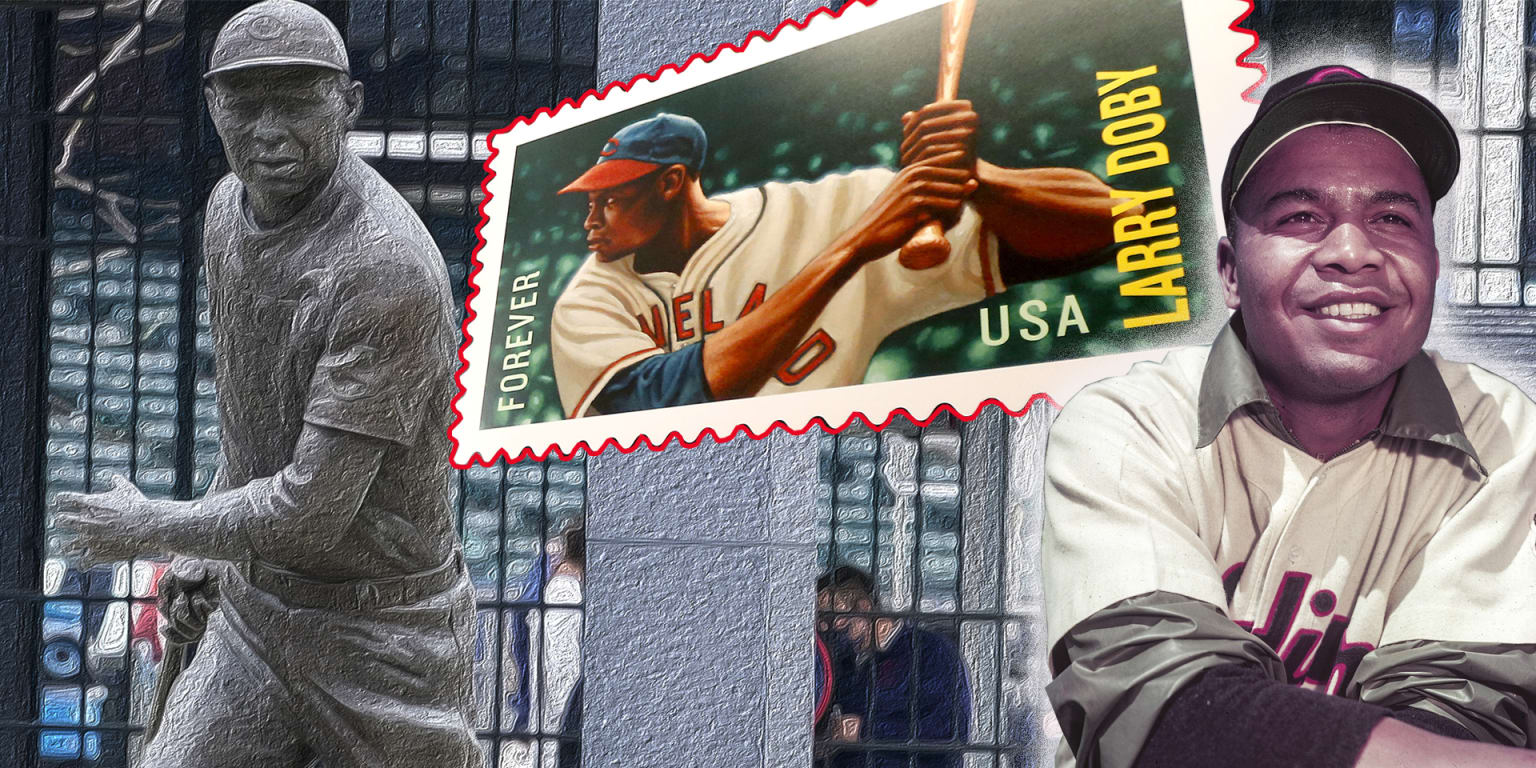Eighty-one days separated the major league debuts of Jackie Robinson and Larry Doby. But the difference in our collective appreciation for what these two legends meant to the game – and to the United States – is incalculable.
Jackie, who made his debut for the Dodgers on April 15, 1947, was the face of a movement, the representative of an idea bigger than baseball itself. In film, in print, and in the unprecedented tribute that came with the retirement of No. 42 across the league, it has been celebrated and recognized as it deserves.
Doby, who broke the color barrier in the American League with Cleveland on July 5, 1947, experienced the same hatred and bigotry as Robinson, but with less publicity and ultimately less recognition.
“Larry Doby was a better player than Jackie Robinson,” legendary Bob Feller once assured me.
I don’t know if that’s true, but what I do know is that Doby’s name deserves to be recognized and celebrated by baseball fans in the same way that Robinson’s is. As Doby told Jet Magazine in 1978, “Nobody said, ‘We’re going to be nice to the second Negro.’ Doby ran into the same adversity as Robinson. In various ways, his path was even more difficult.
Doby made his debut just two days after the Newark Eagles agreed to sell his contract to Cleveland owner Bill Veeck, who was eager to join the American League, and Doby, having guided the Eagles to the Negro League World Series. previous season, he gained their attention. Doby homered in his final at-bat for Newark, then left to reportedly join Cleveland after the All-Star break. But when a newspaper reporter found out about Veeck’s plan, Doby’s debut was pushed forward from July 10 to July 5.
Doby, a solid defensive second baseman and contact hitter, was a key player in the champion title won by the Newark Eagles in 1946. He was in the All-Star Game that year and finished the season with a .341 average already. a home run behind league leaders Josh Gibson and Johnny Davis.
Born in Camden, South Carolina, he was orphaned at age 8. In his school years, he stood out as an athlete in different disciplines, such as American football, basketball and of course, baseball. He studied in Paterson (New Jersey), at East Side High School and later at Long Island University.
He served two years in the United States Navy in World War II, before rejoining the Eagles, when he finished his service, in time to help them win the Black National League pennant and the World Series, over the Kansas City Monarchs. .
In 1948, as a starting outfielder, Doby hit .301 and hit 14 home runs. It was decisive in the victory of the Indians against the Boston Braves in the World Series.
His name stands out as one of four Negro Leagues players (Monte Irvin, Willie Mays and Satchel Paige) who played in the Negro Leagues World Series and the Major League Baseball World Series.
He led the American League in home runs in 1952 and 1954; in 1954, he was the first with 126 RBIs. Between 1949 and 1955 he was invited to the All-Star Game. In addition, in 1954 he was second in the MVP voting, behind Yogi Berra.
In Cleveland, Doby’s No. 14 was retired, the street behind the giant slate at Progressive Field has been renamed “Larry Doby Way,” and a statue of Doby remains outside the stadium. These are well-deserved tributes to a franchise icon.
In August 1998 he was elevated to the Cooperstown Hall of Fame. He died of cancer on June 17, 2003.
It saddens me to learn that Doby died without appreciation for his great contributions to Major League Baseball. But it is never too late to recognize its impact. Larry Doby might have come to MLB shortly after Jackie Robinson, but he was second to none.
.
We would love to give thanks to the author of this short article for this remarkable content
Larry Doby’s MLB legacy endures

